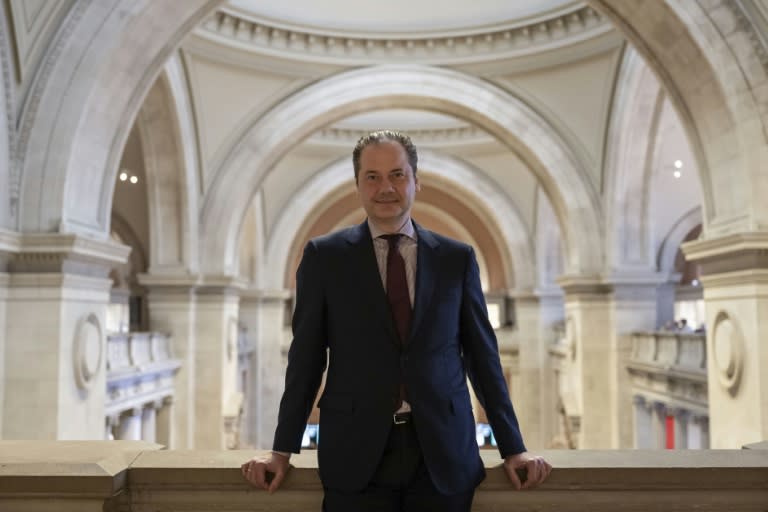NY's Met Museum plans growing focus on African art

New York's prestigious Metropolitan Museum of Art wants to offer its millions of visitors a less Western-centered view of the world, a shift that will highlight works from Africa and the continent's 3,000 years of cultural history.
That shift in perspective will also help the world's fourth most-visited museum -- behind the Louvre, the British Museum and the museums of the Vatican -- attract more African American and diaspora visitors, Met CEO and executive director Max Hollein told AFP in an interview.
The iconic museum, situated on Fifth Avenue across from Central Park since 1870, thus hopes to shine a brighter light on its 4,000 African works, produced by more than 200 cultures from what today are nearly 40 sub-Saharan African countries.
After spending tens of millions on renovations, the Met in spring 2025 will reopen its Michael C. Rockefeller wing, which houses not just African art but also works from the South Pacific and the early Americas.
"We wanted to have a completely new architecture and scenography in showing this work of art, and especially African art," said Hollein, a 54-year-old Austrian art historian and the first European to lead the Met.
He took the Met's reins in July 2023 as it was recovering from a collapse in visitorship during the pandemic. It drew 5.4 million visitors last year, a figure actually 10 percent higher than the pre-Covid 2019 number.
Hollein said the Rockefeller wing, which opened in 1982, already represented a major shift to a "much broader perspective" for the museum, founded and financed by wealthy art lovers, businessmen and collectors of works from Europe, Asia and the Middle East, as well as from ancient Greece and Rome.
- A less Eurocentric view -
But once the renovated and reimagined African galleries open in 2025, they will mark "another milestone."
The museum wants "to make sure that we don't have just a Western-centric or Eurocentric perspective," Hollein said.
The Met has also extended its reach by negotiating agreements with African counterparts, such as a 2023 accord with Nigeria's National Commission for Museums and Monuments to help it with the digitization and cataloging of its holdings.
Working with African countries, the Met in 2020 organized an ambitious exhibit on the arts of the Sahelian empires of the Middle Ages (Ghana, Mali, Songhai and Segu) and a smaller one, which ended last month, on 1,000 years of influence by the Byzantine empire on the art of the Christians of Egypt, Tunisia, Ethiopia and Sudan.
Hollein said it is time to step back from a Eurocentric view -- to stop "just looking at these objects because they've influenced European modernism so much" or studying Maori sculptures only because "they fascinated French artists of the early 20th century."
- African art, American heritage -
To deepen his connection to African art and better understand its works in their local context, Hollein traveled in late March to South Africa, Zimbabwe and Tanzania, meeting with museum curators, art historians and contemporary artists.
He also visited some rare archeological sites: Great Zimbabwe, the ruins of a medieval city in that country's south, and the Tanzanian island of Kilwa Kisiwani, where the remains of another medieval city are now recognized as a World Heritage Site by UNESCO.
Videos with updated information on the sites will be shown in the Met's Rockefeller wing.
Eager, like other American and European museums, to appeal to a younger and more diverse public, the Met has turned its attention to the multicultural mosaic that is New York City -- and in particular its population descended from enslaved peoples, as well as more recent arrivals from Africa and the Caribbean.
"It's the art of Africa, but it is basically also the cultural heritage of African Americans in the United States," Hollein said.
nr/arb/bbk/nro

